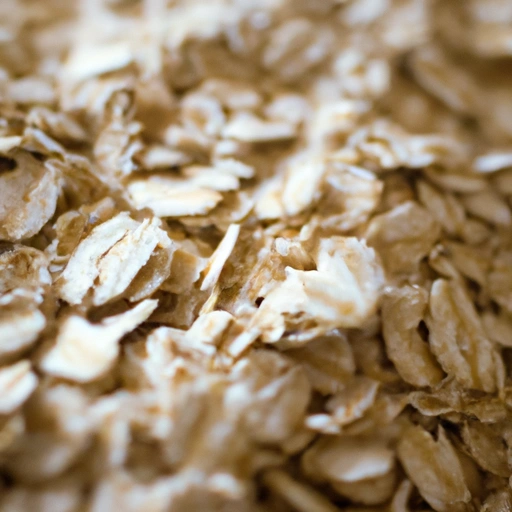Rolled Oat
Description

Rolled oats are a whole grain food, commonly known as old-fashioned oats. The oat kernels are steamed and then pressed with large rollers to flatten them. This process stabilizes the healthy oils in the oats, so they stay fresh longer, and helps the oats cook faster, by creating a greater surface area. They are a popular breakfast item and cooking ingredient around the world and are lauded for their health benefits and culinary versatility. Rolled oats are available in a range of sizes and thicknesses, and they can be used in both sweet and savory dishes.
Common uses
Rolled oats are a common ingredient in breakfast cereals like granola and muesli, in baking recipes such as oatmeal cookies, and as a topping for fruit crisps. They are also used as a binding agent in meatloaf and veggie burgers, and can be turned into oat flour for gluten-free baking.
Nutritional value
Calories
One cup of rolled oats (approximately 81 grams or 2.86 ounces) contains about 307 calories (1289 kJ).
Protein
This same serving size offers around 11 grams (0.39 ounces) of protein, an essential macronutrient for muscle building and repair.
Fat
Rolled oats contain approximately 5 grams (0.18 ounces) of fat, with a balance of monounsaturated, polyunsaturated, and saturated fats.
Carbohydrates
They are rich in carbohydrates, with around 55 grams (1.94 ounces) per cup, providing a slow-releasing source of energy.
Vitamins
Rolled oats are a good source of B-vitamins, particularly thiamin (Vitamin B1) and pantothenic acid (Vitamin B5).
Minerals
They are also high in essential minerals such as manganese, phosphorus, magnesium, copper, iron, and zinc.
Health benefits
Consuming rolled oats can support heart health by lowering cholesterol levels, improve digestive health due to high dietary fiber content, and assist in stabilizing blood sugar levels, making them beneficial for individuals with diabetes. Their beta-glucan fiber content also contributes to enhanced immune responses.
Potential risks
Although rolled oats are generally safe for most people, they may contain traces of gluten from processing facilities that handle other grains, posing a risk for individuals with celiac disease or gluten intolerance. Additionally, excessive consumption can lead to gastrointestinal discomfort due to high fiber content.
Common recipes
Rolled oats are a staple in oatmeal or porridge, and a key ingredient in baked goods like cookies, bread, and pancakes. They are often found in snack bars and granola.
Cooking methods
They can be cooked with liquid (water, milk, or dairy alternatives) to make oatmeal, used raw in smoothies and yogurt parfaits, or baked into goods.
Pairing with other ingredients
Rolled oats pair well with fruits, nuts, honey, maple syrup, spices (like cinnamon and nutmeg), and dairy products. They also complement savory flavors in dishes like meatloaf or stuffed peppers.
Summary
Rolled oats are a versatile, nutritious whole grain that can be enjoyed in a multitude of ways. From a hearty breakfast to a satisfying ingredient in many recipes, rolled oats offer both flavor and health benefits, making them a valuable addition to a balanced diet.